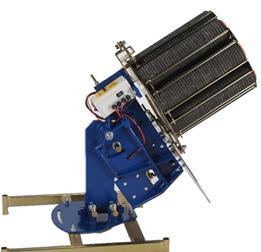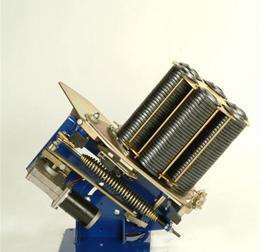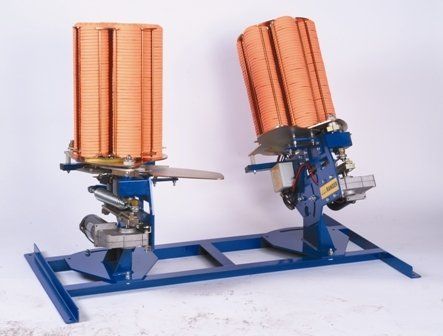About Clay Shooting
History of Clay Shooting
As our sport continues to expand we should take a little time to consider the origins of what is now one of the most fun sports and leisure activities of today.
For many years the sports men and women of Britain would shoot pheasants and game birds of all varieties, not until as late as the 1860's when glass balls filled with feathers were introduced and a throwing mechanism was invented that worked rather like an animal trap, was shooting available to men and women who could not afford the normal costs of a day out shooting. This type of machine was possibly the first "glass ball trap". Could it be the first coining of the phrase "Ball Trap?"
However with the introduction of the artificial target the sport was opened up to many more enthusiasts who did not have to pay for the expensive "Huntin' and Shootin' Week Ends" and as the end of the nineteenth century loomed the true "clay" target appeared. The Victorians would frequently use these for practise before going onto the estates to shoot the live birds. The simulation of bird flight transferred to a clay target was the first discipline and from early 1900s "Sporting" was considered as the premiere shooting pass-time and in 1927 there was enough interest throughout the country to hold a British Open Championship.
In recent years "Sporting" has returned to its former exalted position of being the most attended of all the disciplines overtaking the trap disciplines in England; however in Scotland the trap discipline attendances still outnumber the sporting.
Now we use the most sophisticated traps to throw the clays for the competitors who enjoy the facility of multiple disciplines and structured organisations behind them to promote and encourage Clay Shooting even to Olympic standards. The sport can be extremely competitive and through the Governing Body in Scotland, "The Scottish Clay Target Association" competitors can achieve international status in the Commonwealth Games or Olympics.
For those who wish to participate just for fun, it is the ideal sport. Whether at an International Ground or a local club the novice will always find someone to guide them through the first few targets and then coach them onto being more proficient. Clay Target shooting is also one of Scotland's fastest growing sports and many business organisations take advantage of the "Corporate Days" provided by SCTA qualified Instructors at grounds all over Scotland .
Safety
It is extremely important that anyone using or considering the purchase of a shotgun understand the basic safety practices that must be adopted. We have therefore included in this section a guide to the safe handling of shotguns.
Shotguns used for Clay Targets

Over and Under Shotgun
This is certainly the most popular choice of gun for clay target shooting. With one barrel on top of the other it gives a better perception in relation to the clay target. Many models have the facility to alter the chokes thus increasing the versatility of the shotgun. Prices range from a few hundred pounds to what ever you wish to pay for personally fitted and engraved guns

Semi-Automatic
A single barreled gun, where loading and ejection of the cartridges is automatic. With the advantage of considerably reduced recoil this gun is popular with some beginners. But for competitive clay shooting there is the great disadvantage of only having one choke size for both shots.

Side-by-Side
This is a more traditional design of Shotgun many models have two triggers, one for each barrel. Although not often seen at clay shooting events this is by far the most popular gun of choice for game shooting. Multi choking is rare but available. The price of these guns can vary from a couple of hundred pounds to many, many thousands of pounds for the finest quality workmanship
Clay Target Traps
There are so many different types of traps we can only display a small selection of those available. Our thanks to Promatic Traps for their assistance in the construction of this page.
ABT / Auto Trap
This trap is designed for ABT and can also be used for DTL. A very versatile trap providing a multi positional rotation discs for varying angle and height settings

ABT /DTL Double Rise
This top of the range trap is designed to operate on ABT, Double Rise, and DTL and has a "turnbuckle" for tuning the angles.

DTL Trap
One of the most popular traps in clay target shooting. Carrying a 12 column carousel and 400 clays. Simple adjustment for cross winds is necessary and a turnbuckle for height refinements.

Battue Trap
Ideal for a variety of targets required to entertain competitors and beginners alike.

Chondel Trap
Using standard clays, offering a "looping" target, a flat trajectory, or an almost vertical "teal" thereby vastly increasing the varieties of target presented to the shooters.

Downhill Trap
An extremely versatile sporting trap that offers the largest variations of target. Tipping to 70 degrees giving the shooters even more testing scenarios.

Olympic Trap & Universal Trench
The ultimate in OT traps 10 stacks holding 300 clays. Just imagine 15 of these traps in an Olympic Trap layout

Rabbit
Simple effective and adjustable to accommodate various terrains. One of the most popular targets at any clay shoot.

Stacking on 6 columns
Again a very versatile trap for use in small clay club competitions holding 200 targets lessening the time between filling, giving more continuity to competitions

Single Clay
A trap similar to this can throw clays at almost one per second to a distance of about 300 feet and gives a very credible "following pair". Can be adapted to throw "midi" clays

Simulated Teal
This trap can be set to throw the highest angled target required in sporting competitions.

Triple Trap Trailer
This system is available with either one, two or three traps on a trailer and has the advantage that it can be taken anywhere. The traps can be of different types for greater variety of targets

Trolley
Definitely one of the most useful traps. A small stacker on a trolley for manoeuvrability and simplicity of use.

True Pair
Based on left and right hand traps giving a "True Pair". Traps can be adjusted independently to throw a huge variety of targets.

The Clay Target
The clay target also well known as a clay pigeon comes to us in many sizes and forms.
With the development of different disciplines and the need for different clays the manufacturers have responded and developed many clays that will fly in different manners and stand the stresses of modern traps but yet break easily if hit by the shot. So many demands are made upon the modern clay, it must be bio-degradable, it must be tough enough for throwing, it must be readily seen in different lights and it must still be reasonably priced in today's very competitive market. When it comes to colours there are several available for each variety of target. The standard target is available in about 7 colours and even "flash" to give that wonderful feeling of satisfaction when it looks to explode in a ball of colourful dust when hit.
The most commonly used clay is the "Standard" which weighs in at 105 grams is 110 mm in diameter, and it is approximately 25 mm in height.
The "Rabbit" as its name suggests is designed to run along the ground with a slightly thicker rim it is a flat style of target and is 98.5 mm in diameter a little smaller then the "Standard"
With the same overall shape as the "Standard" clay the "Midi" is only 90 mm in diameter and only weighs in at 75 grams.
The "Mini" is a tiny 60 mm demon of only 36 grams.
The "Battue" is a flat style of clay target, it is 107.5 mm, approximately the same size as the "Standard". It flies very fast and tends to drop rather quickly.